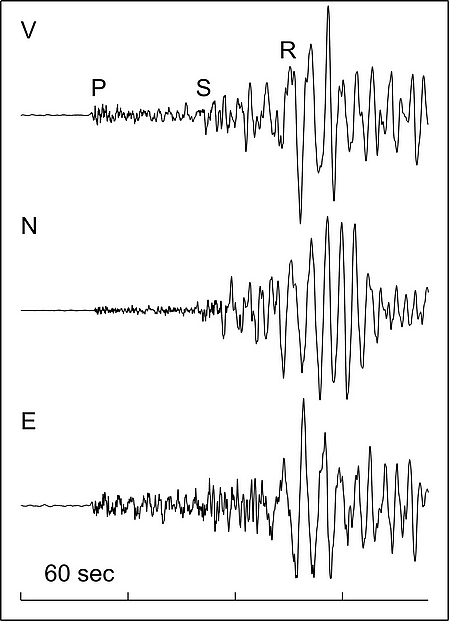Seismic Waves
Here is an example of several main types of seismic waves. Our seismograph at Lillooet, B.C. recorded these waves from a magnitude 6.6 earthquake that occurred 600 km to the west on Nov. 2, 2004. Time unfolds from left to right in the diagram, at a rate of 60 seconds per tick mark at the bottom, and the three traces indicate vibration of the earth vertically ("V") and in north-south ("N") and east-west ("E") directions.
First of all, at the left, there is the ordinary motion of the earth: almost a straight line, which would indicate no movement, but one can perhaps see small movements due to wind etc. Then the energy from the earthquake arrives, beginning with the P waves ("Primary"), which vibrate at a higher frequency and in the same direction as the path followed by the energy, and are therefore easier to see in the vertical ("V") and east-west ("E") traces.
The S waves ("Secondary") travel more slowly, so at this distance they arrive about a minute later than the P waves. These waves vibrate in a direction at right angles to the path along which the energy arrives, (from side to side), so because they're arriving from the west, they can be seen most clearly on the north-south trace ("N"). Later, the Rayleigh waves arrive ("R" in the diagram; named after Lord Rayleigh who described them mathematically) which follow the surface of the earth, as opposed to the P and S waves, which travel deep in the earth.
A description of seismic waves can be found at this site: http://www.geo.mtu.edu/UPSeis/waves.html
